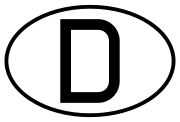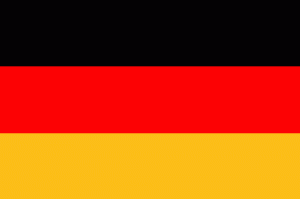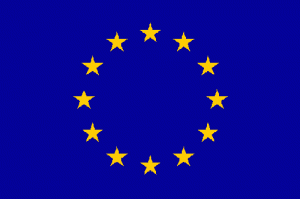Or maybe: Panem et circenses.
 When I was a child, I often went to the Sowjet Zone. In the general language use of the Federal Republic of Germany of the 1950ies, as well as in my home, that was what we called the GDR. The term GDR was frowned upon just as much as the term “so-called GDR”.
When I was a child, I often went to the Sowjet Zone. In the general language use of the Federal Republic of Germany of the 1950ies, as well as in my home, that was what we called the GDR. The term GDR was frowned upon just as much as the term “so-called GDR”.
In the Sowjet Zone, I always enjoyed particular luxury. My great-aunts always had plenty of money (for which – according to them – you could not buy anything), and the rolls and malt beer were very cheap. Later, my father explained to me that prices for victuals and books were artificially kept low. Because – unlike the Federal Republic of Germany – the GDR was a country where inflation was outlawed.
Incidentally, it is true that victuals, living space and other necessary basic articles like energy were hugely subsidized.
 In the Federal Republic of Germany, we also subsidize a lot. Like rolls and bread. But if we subsidize, then we really get into it. That is why we also subsidize the expensive things, such as cars.
In the Federal Republic of Germany, we also subsidize a lot. Like rolls and bread. But if we subsidize, then we really get into it. That is why we also subsidize the expensive things, such as cars.
To be sure, if you drive a car, you have to pay a lot of tax, and the petrol is also subjected to taxation. But that money only covers a part of what the individual traffic costs. We keep forgetting how high the environmental damage caused by cars is. And the sum of the collateral damage, such as the noise carpet all over the country, cannot be assessed anyway.
 For cars, there are additional subsidies. Companies can set off the additional value tax when they buy a new car against tax liability. The same is true for the petrol and all other additional costs, even if the car is mostly used privately. The rule “1 % of the price it cost must be subjected to taxation per month” makes the price very low, considering what a car costs besides the price you pay when you buy it and how high the actual financial advantage is.
For cars, there are additional subsidies. Companies can set off the additional value tax when they buy a new car against tax liability. The same is true for the petrol and all other additional costs, even if the car is mostly used privately. The rule “1 % of the price it cost must be subjected to taxation per month” makes the price very low, considering what a car costs besides the price you pay when you buy it and how high the actual financial advantage is.
Consequently, the ratio of business cars among all the cars registered in D is already more than 80 % for some brands. And for those who use the old cars for private purposes, the wreck premium was installed: 5 billion Euros for 2 million cars. In order to ensure that also the “poor Germans who drive old cars” can afford new cars.
But there are other areas, as well, where subsidies are granted quite randomly, often rather subtly. Banks, farming (including tobacco farming), “old industries”, our hotels, the nuclear industry, airports and aviation, the construction industry, the health industry, lobby-oriented research, reduced working hours and unemployment, the war in Afghanistan, the churches, the parties, etc. etc. etc. Everything is subsidized, nobody must leave empty-handed.
It looks like we will soon beat the GDR. But what was the fate of the GDR? They went bankrupt. Why? Because their subsidies were financed by debt. And when no more borrowing of money was possible, the bankruptcy came. If there had not been bankruptcy and economic misery, no demonstration in Leipzig and Dresden would ever have happened. Without demonstrations, the GDR would still exist.
What does our Federal Republic of Germany do? We finance our subsidies by debt to an extent that makes even the GDR look harmless. And we are doing it in the middle of a European system that is characterized by more of the same: subsidies and debts.
 During the cold-war area, the talk was about the domino principle. Now might be the time when it will have to be applied again: first Greece falls, then Portugal, then Spain, then Ireland, etc. And then? GB is said to be the sick man of Europe, and nobody mentions Italy any more. And the Germans probably have a higher per capita debt than the poor Greeks. But since we are economically so very capable, it does not really matter?!
During the cold-war area, the talk was about the domino principle. Now might be the time when it will have to be applied again: first Greece falls, then Portugal, then Spain, then Ireland, etc. And then? GB is said to be the sick man of Europe, and nobody mentions Italy any more. And the Germans probably have a higher per capita debt than the poor Greeks. But since we are economically so very capable, it does not really matter?!
It looks like quite a few things will disappear, maybe the now ten-year-old currency and the 60-year-old Federal Republic of Germany. But that is not a tragedy if the change gives birth to something new and good. I would be in favour of small German regional countries in a unified and modern Europe.
RMD
(Translated by EG)
P.S.
Here is a website describing the possible “tipping points” when it comes to the climate catastrophe. It would be interesting to determine the “tipping points” of our market economy.
P.S.1
I took the GDR flag from wikipedia, those of Germany and EU are from
http://www.nationalflaggen.de. It explicitly says that the graphics may be used for private purposes. Many thanks!

